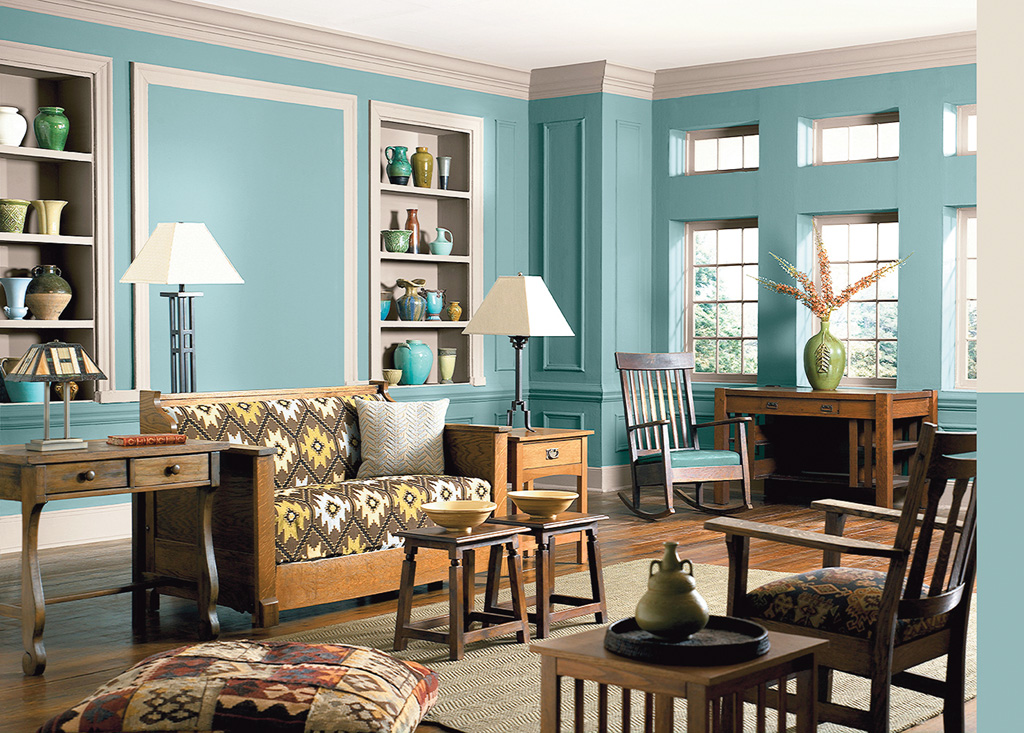Choose the best interior paint colors for higher resale value
By Erik J. Martin
Many home sellers already know that adding a fresh coat of paint to walls and ceilings can make a favorable impression on prospective purchasers. But if you really want to wow buyers and pocket a bigger profit, pay greater attention to paint colors, say the pros.
A recent study by Zillow Digs shows that the hue you select to paint on your walls can significantly impact the finale sales price of your home. Shade-in-point: for-sale listings with rooms coated in sage green or wheat yellow paint can result in a sales price approximately $1,300 more than expected, and creamy or wheat yellow kitchens can possibly yield the most dividends – a sales price $1,360 more than anticipated. Light green or khaki bedrooms and dove or light gray living rooms also had a positive sales impact.
“A fresh coat of paint is probably one of the easiest and most affordable ways to improve your home’s overall appearance and style for both photos and in-person walk-throughs,” says Kerrie Kelly, Zillow Digs home design expert in Sacramento, California. “Fresh, natural looking wall colors, including sage green, wheat yellow and light tan, blend well across design styles and help future buyers easily envision themselves living in the space.”
Larry Greene, president of Indianapolis-headquartered interior design firm Case Indianapolis, recommends repainting in light, neutral colors like grays, tans, light yellows and other pale muted tones, which can make rooms feel bigger and more spacious.
“Any rooms that don’t get a lot of natural light will need a lighter color to brighten them up,” Greene says. “Gray-blue shades are nice if you have a cool palette in your home, and a golden tan can warm up a room that lacks natural light. Anything very bright or dark should be painted over.”
Be careful to pick colors that harmonize with the rest of your abode.
“If your home features a palette of cool blues, don’t throw one warm yellow room into the mix, keep consistent but tone the colors down to make them more neutral and universally pleasing,” Greene says.
If existing wall colors fit the aforementioned criteria, count on adding a fresh coat of the same color anyway, says Marie Graham, decorator, home stager and owner of The Refreshed Home in White Plains, New York.
“Make the biggest impression by front-loading your efforts, focusing on main and expected rooms- the entry, living room, dining room, kitchen, family room and master bedroom,” Graham says. “Wall colors should flow from room to room. Different colors for different rooms feel like ‘more’ and let potential buyers quickly and more easily understand what they’re seeing online, especially when there are multiple or similar rooms like bedrooms, bathrooms and family/living rooms.”
Before settling on an interior wall paint color, also consider the permanent elements in the room like hardwood floors, porcelain tiles or carpeting.
“Identify the warm or cool undertones within the fixed elements so you can select a color that creates a sense of harmony with what’s already in that space,” Priscilla Ghaznavi, color and design director with Montvale, New Jersey-based Benjamin Moore, says. “Additionally, assess the natural and artificial lighting in the space, which affects how color looks. Paint samples of your top choices on poster board, hang them around the room and see how the color looks at different times of day.”
© CTW Features

